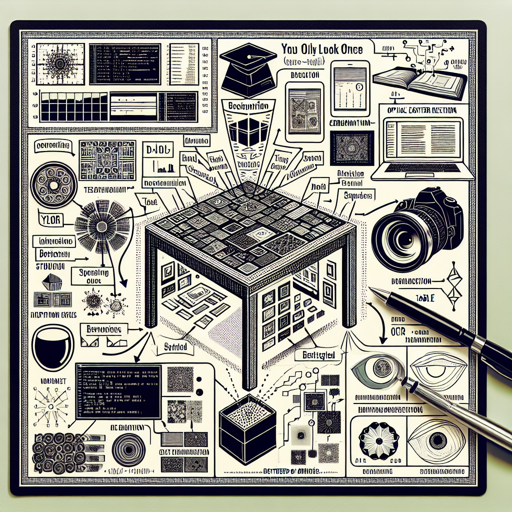Detecting tables in images can be a challenging yet essential task, especially when dealing with unstructured documents. The YOLOv8s Table Detection model presents a powerful solution for identifying tables, whether they are bordered or borderless. This article will guide you through the steps to effectively use this model while providing troubleshooting insights to make your experience smooth.
Model Overview
The YOLOv8s Table Detection model is designed on the reliable YOLO (You Only Look Once) framework, achieving notable accuracy in detecting and classifying tables. It employs advanced techniques to isolate tables from images and works hand-in-hand with Optical Character Recognition (OCR) for data extraction.
Getting Started with YOLOv8s
To leverage the full potential of the YOLOv8s Table Detection model, follow these steps:
Step 1: Install Dependencies
You’ll need to install the necessary libraries for the model to work. Open your terminal and run the following command:
pip install ultralyticsplus==0.0.28 ultralytics==8.0.43Step 2: Load the Model
After installing the libraries, you can now load the YOLOv8s model with the following Python code:
from ultralyticsplus import YOLO, render_result
# load model
model = YOLO('foduucomtable-detection-and-extraction')Step 3: Set Model Parameters
Configure model parameters to fine-tune the performance:
model.overrides['conf'] = 0.25 # NMS confidence threshold
model.overrides['iou'] = 0.45 # NMS IoU threshold
model.overrides['agnostic_nms'] = False # NMS class-agnostic
model.overrides['max_det'] = 1000 # maximum number of detections per imageStep 4: Prepare Your Image
Specify the path to the document images containing tables you want to detect:
image = 'pathtoyourdocumentimages'Step 5: Run Inference
Now, perform the inference on your image with the following code:
results = model.predict(image)
# observe results
print(results[0].boxes)
render = render_result(model=model, image=image, result=results[0])
render.show()Understanding the Code through Analogy
Think of the YOLOv8s Table Detection model as a professional detective (the model itself) using a magnifying glass (the parameters set by you) to look for hidden treasures (the tables) in a messy room (the image). The detective carefully examines every corner of the room while ensuring he has the best equipment to spot the treasures. Your configurations, like NMS confidence thresholds and the maximum number of detections, help the detective minimize distractions and focus on finding as many valuable treasures as possible.
Troubleshooting
While using the YOLOv8s model, you may encounter some issues. Here are some common troubleshooting ideas:
- Model Performance: If the model isn’t detecting tables accurately, ensure your input images are of high quality and well-lit. Variations in lighting can significantly affect detection.
- Detection of Small Tables: The model might struggle with tiny or distant tables. Try adjusting your image resolution or cropping closer to the table.
- Integration with OCR: For data extraction issues, ensure your OCR setup is correctly configured to work with the cropped table images.
- Ask for Help: For more insights, updates, or to collaborate on AI development projects, stay connected with fxis.ai.
Conclusion
The YOLOv8s Table Detection model is an exceptional tool for anyone needing to extract data from unstructured documents. Whether you are developing applications for document analysis or improving data retrieval processes, this model can streamline your workflows. Remember to keep experimenting with different parameters and engage with the community for continuous learning and improvement.
At fxis.ai, we believe that such advancements are crucial for the future of AI, as they enable more comprehensive and effective solutions. Our team is continually exploring new methodologies to push the envelope in artificial intelligence, ensuring that our clients benefit from the latest technological innovations.

